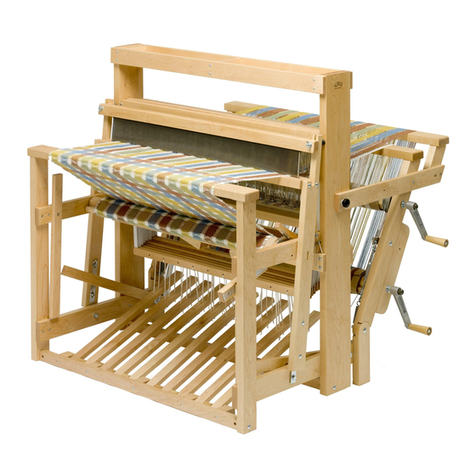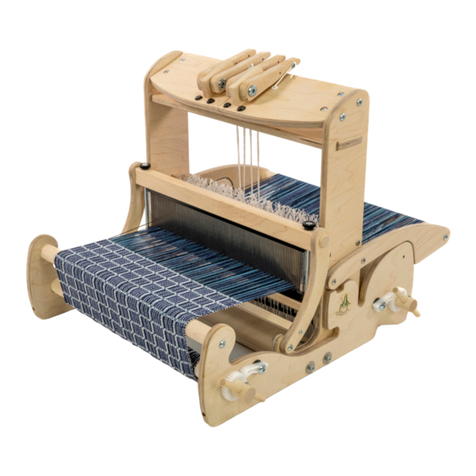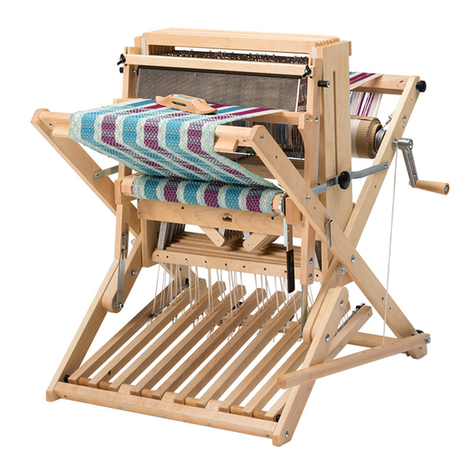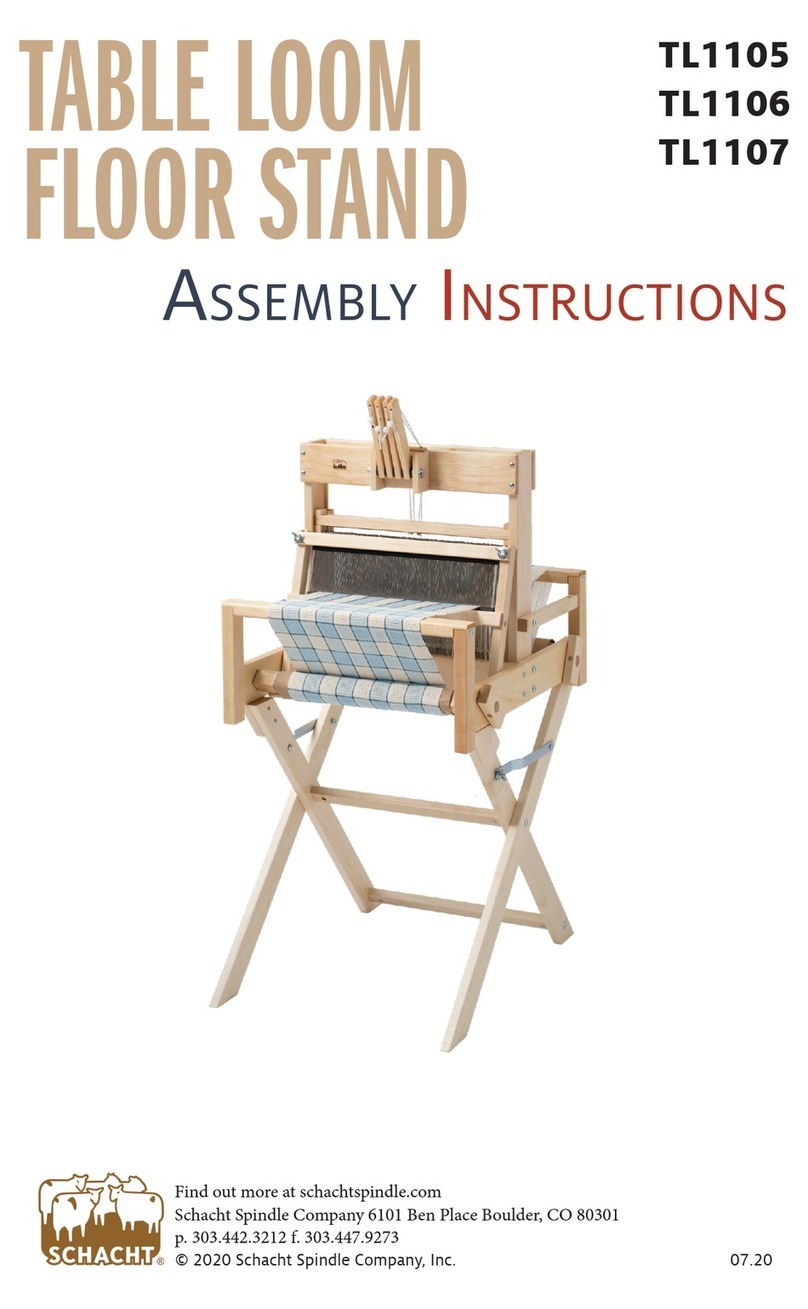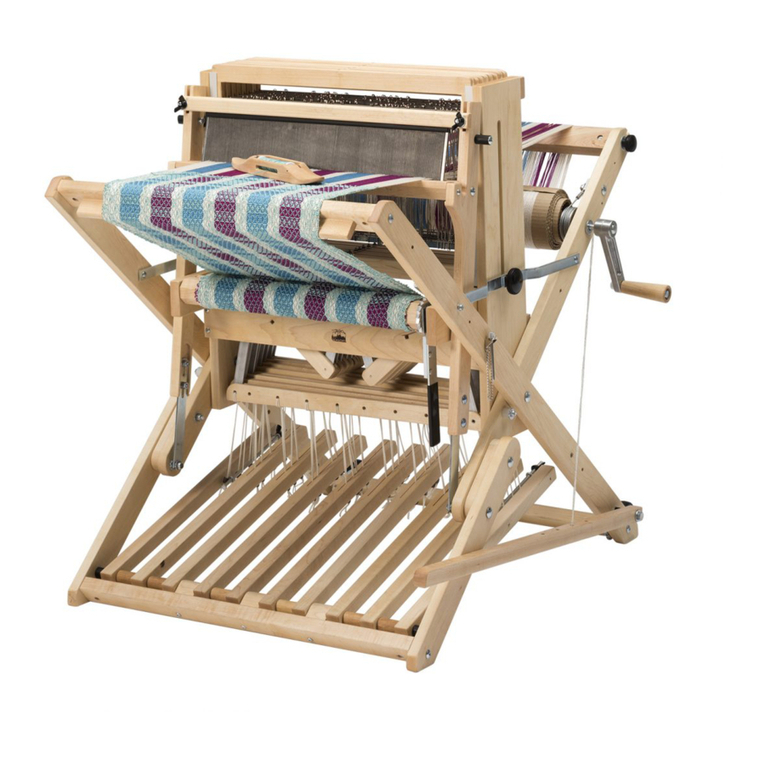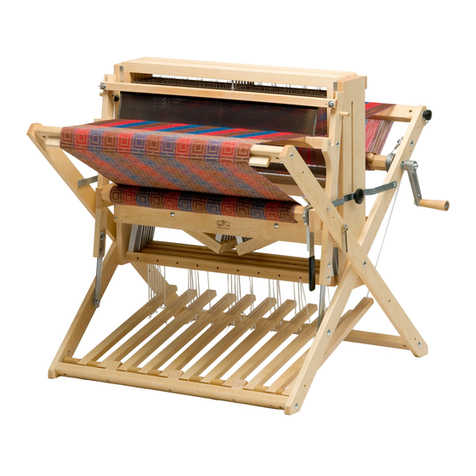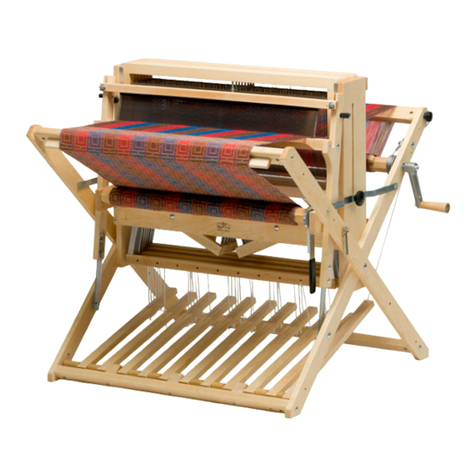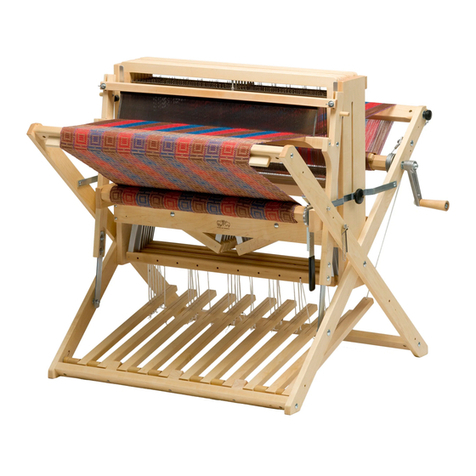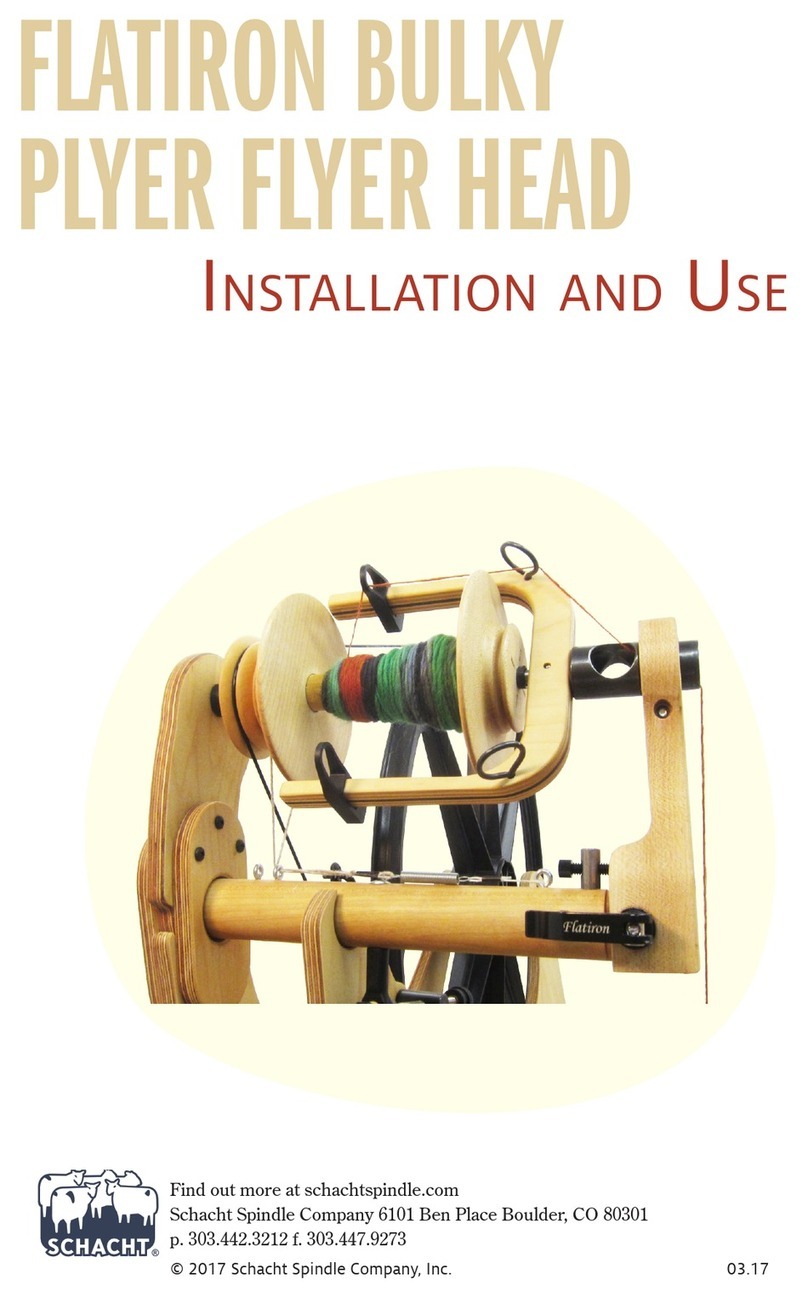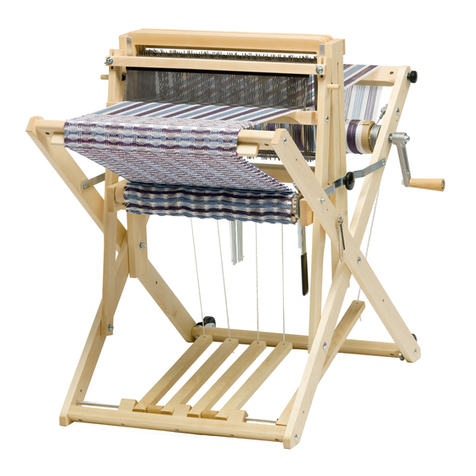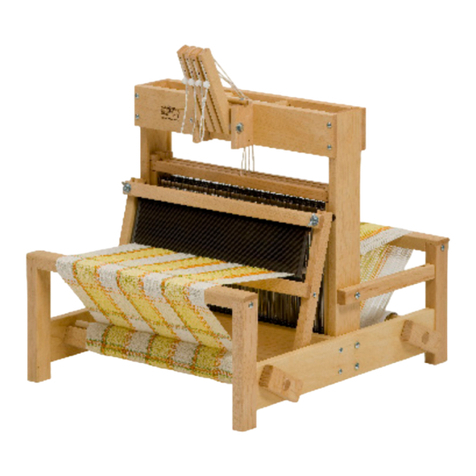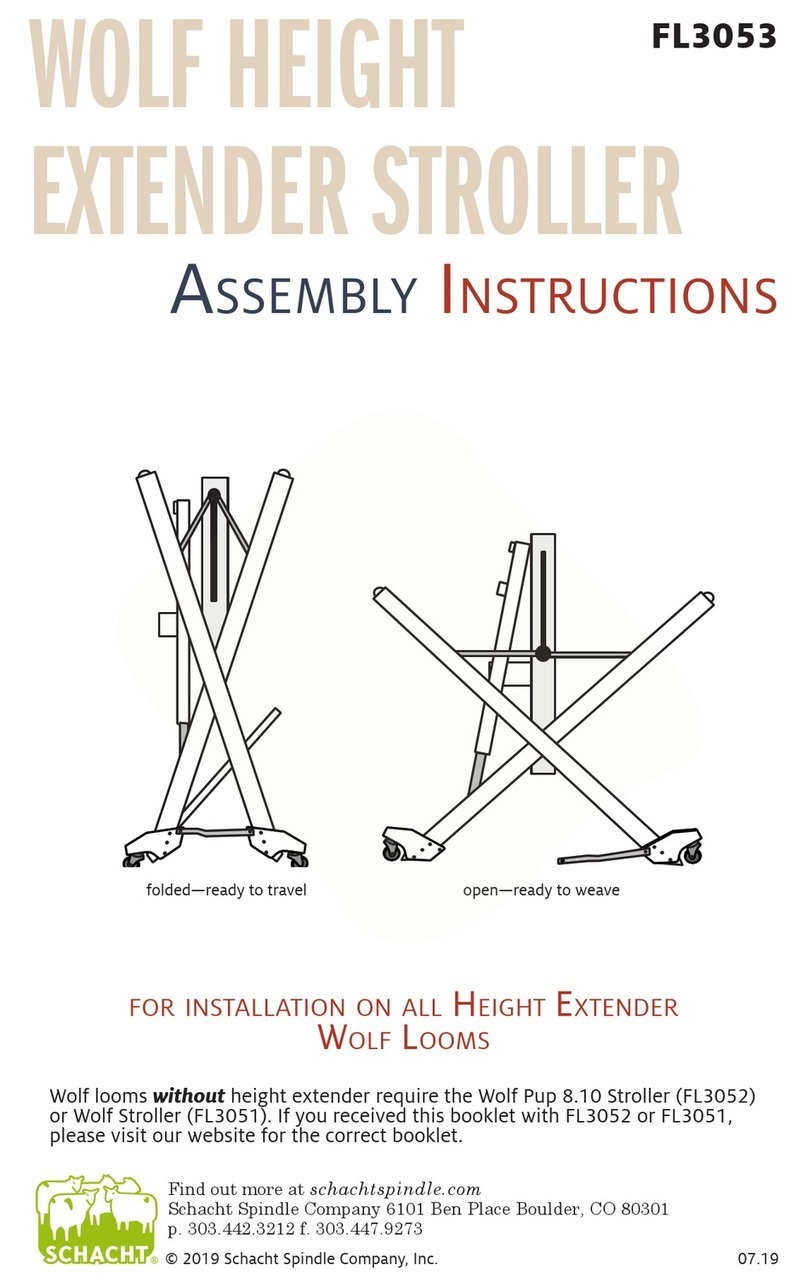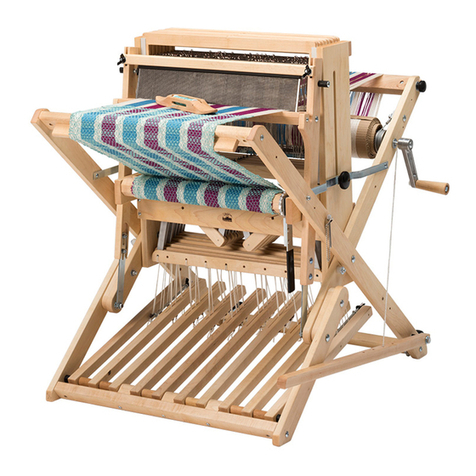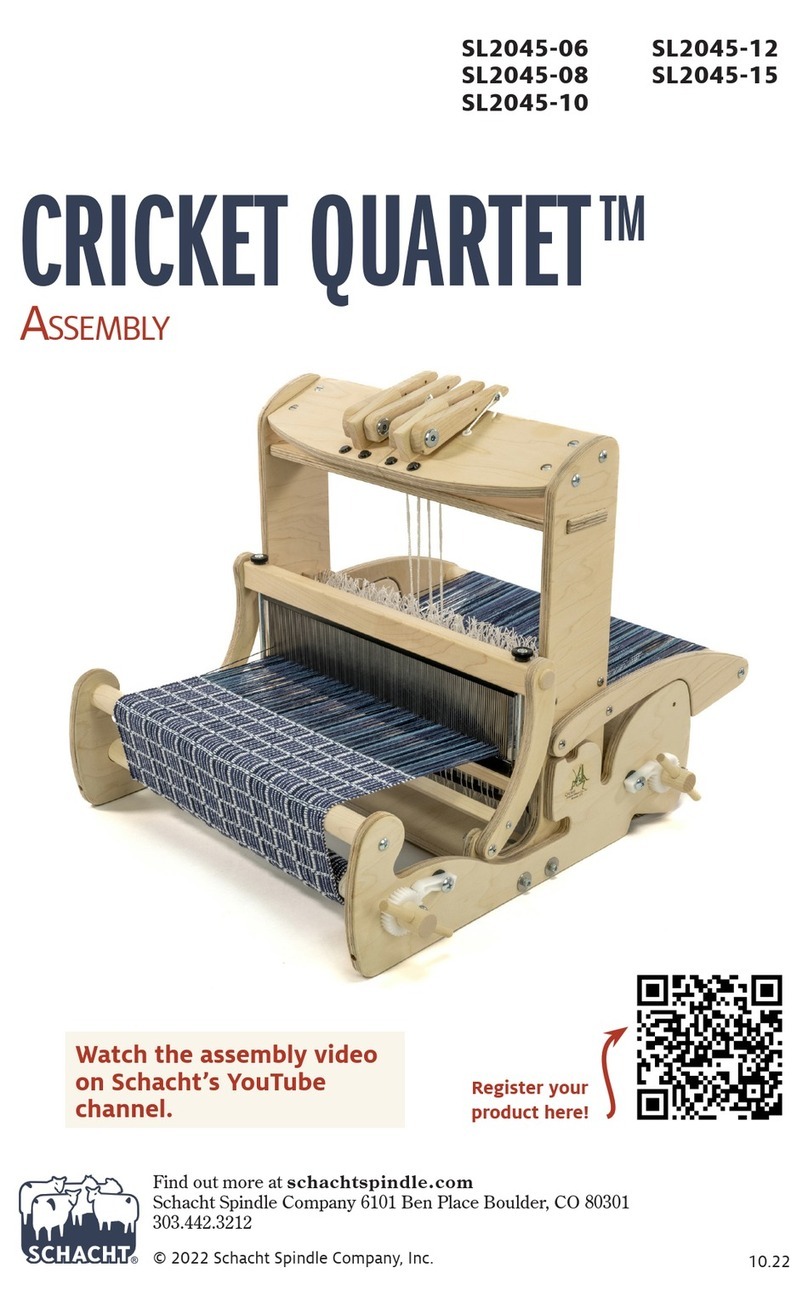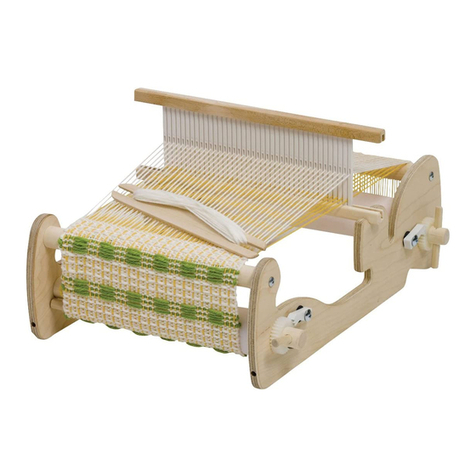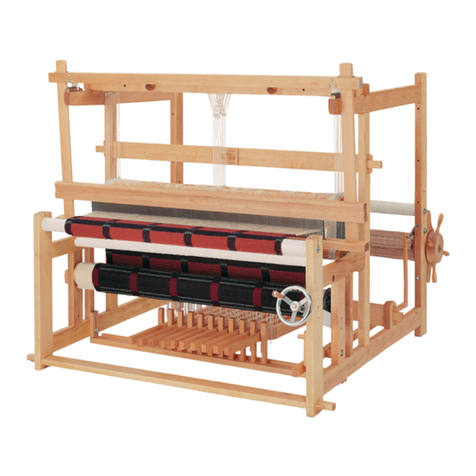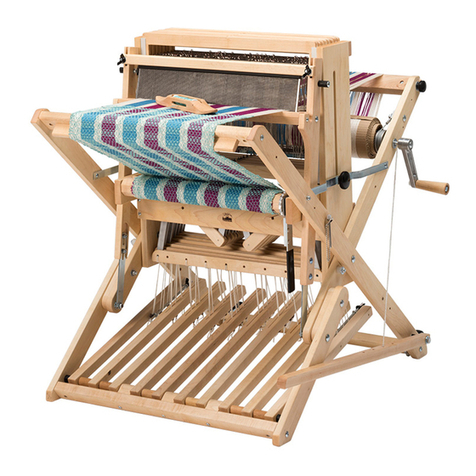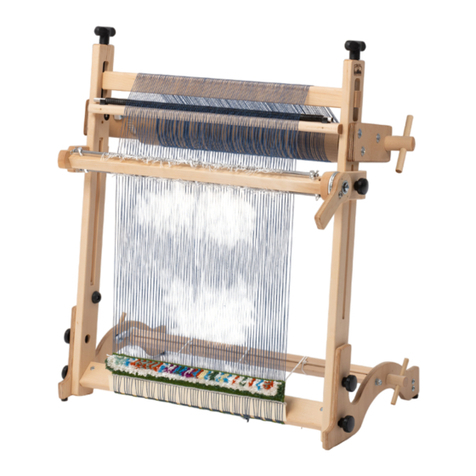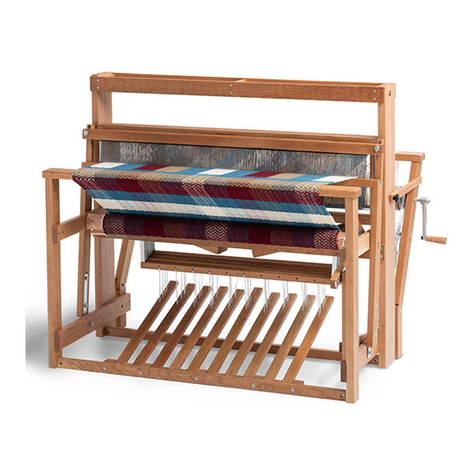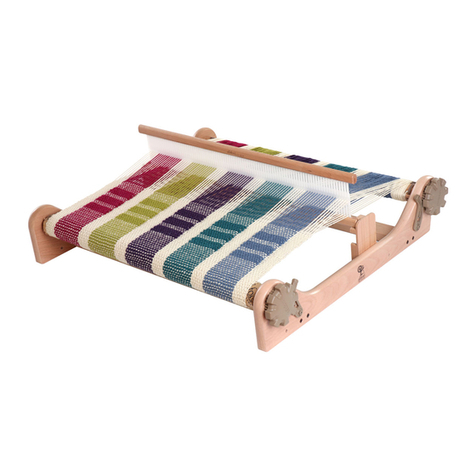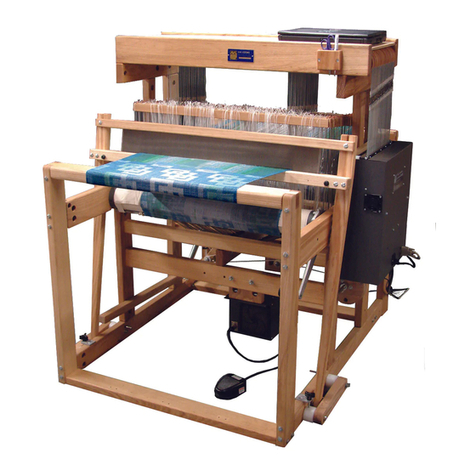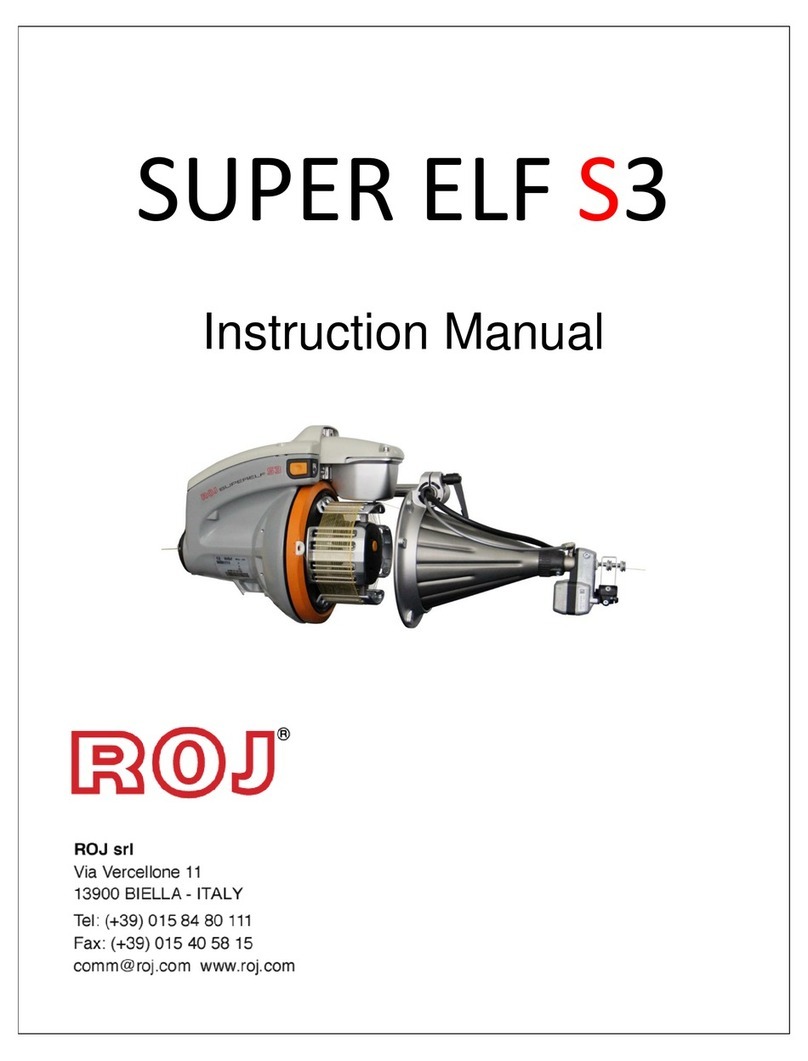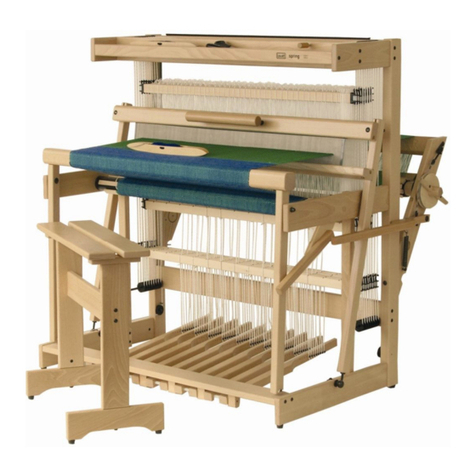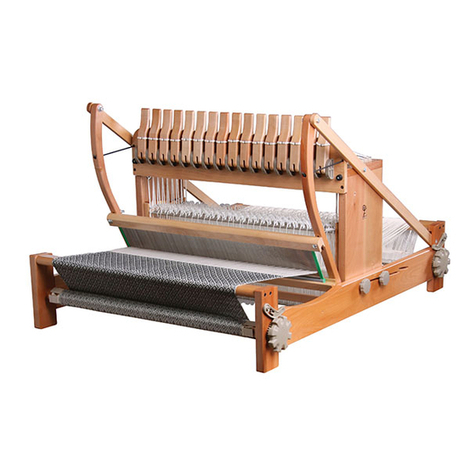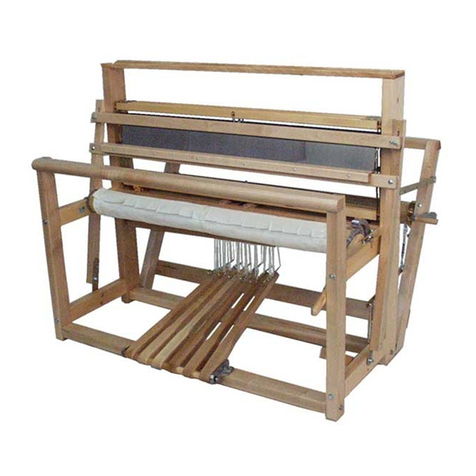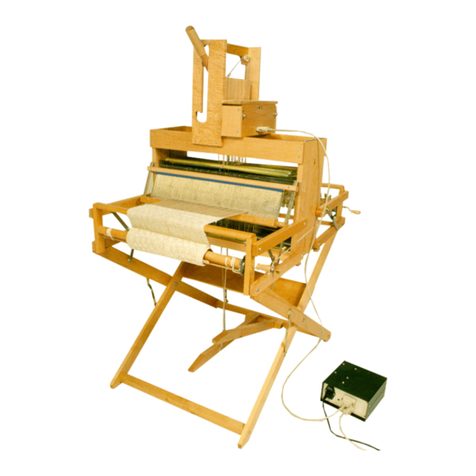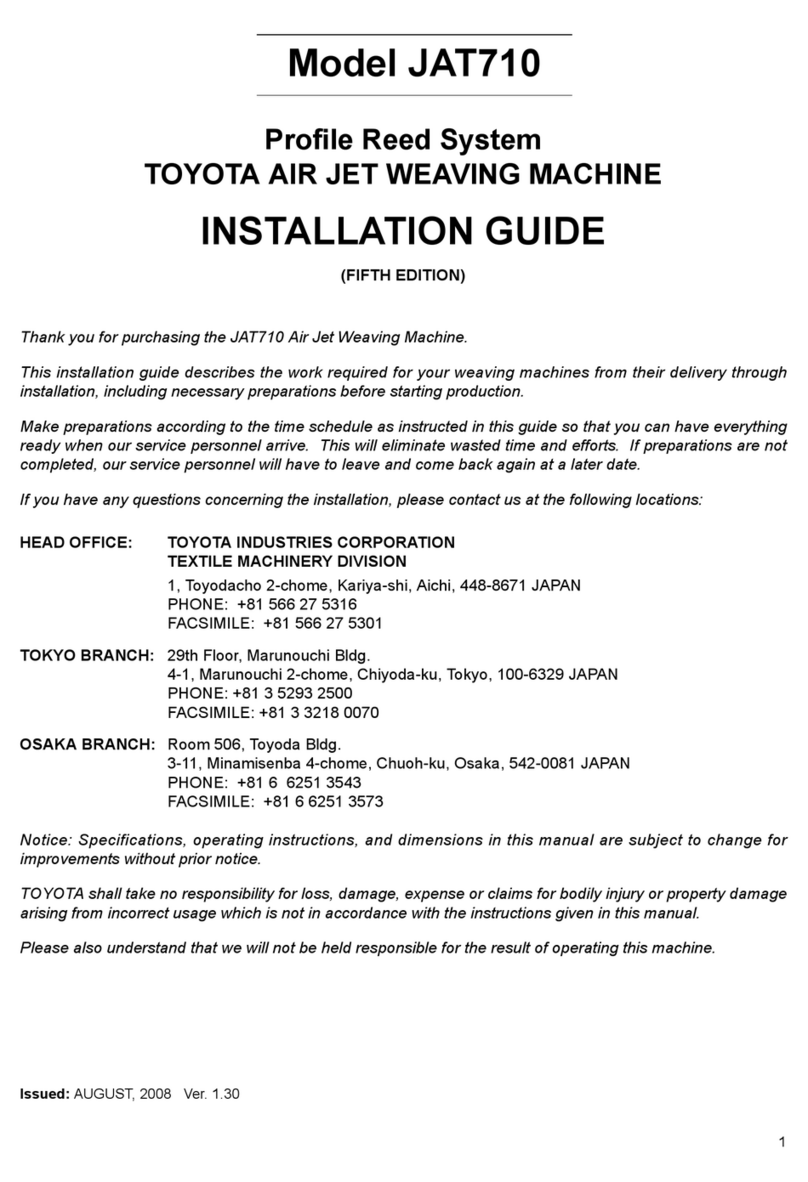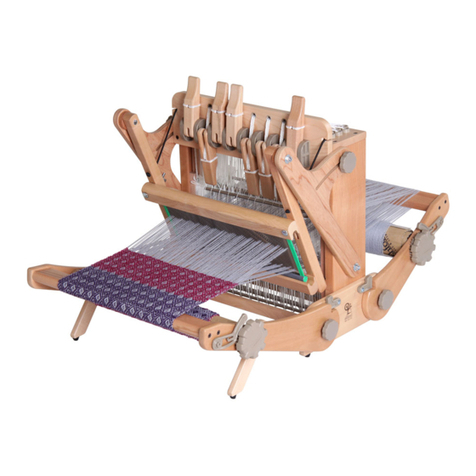
— 9 —
ATTACH THE LOWER LAMM ASSEMBLY
Parts: lower lamm assembly
Hardware: 2X 3/8" x 3-1/2" hex bolts; 2X 3/8" at washers; 2X
3/8" barrel nuts
Leave the wrapping materials in place until you have attached
the lamms. Make sure the hooks on the lower lamms face up.
From the inside of the left frame side, insert 3/8" x 3-1/2" hex
bolts and 3/8" at washers into the two holes for the lower
lamm assembly (see Figure 2, page 6). Insert a 3/8" barrel nut
into each extension block. Slide the extension blocks over the
hex bolts, turning the barrel nuts if needed. Tighten the hex
bolts securely.
INSTALL THE STEEL BEAMS
Parts: 3 steel beams with attached hardware
Breast Beam: The breast beam ts into the slots at the top
of the front uprights (see Figure 2, page 6). Remove the
hardware so you can remove the packing materials. Insert
each 3" button head bolt through a fender washer and then
through the large at washer. Attach the bolts into each end of
the beam, securing them about 1/2" deep. Position the beam
with the bolts over the slots in the front uprights, with fender
washers on the outside of the frame and large washers on the
inside. Slide the beam down to the bottom of the slots. Tighten
the bolts by hand, then use the large allen wrench to secure as
tightly as possible.
Back Beam: The back beam ts in the fourth hole from the
top in the rear uprights of the side frames (see Figure 2, page
6). (Holes closer to the top accept an optional double warp
beam and optional tension box rail.) Attach one end of the
back beam at a time. Insert a 3" button head bolt through a
fender washer, then through the frame side, then through the
large at washer. Do not push the button head bolt all the way
through the washers and frame side. Have a helper raise the
back beam into position as you align the bolt and the hole in
the beam. Tighten the bolts loosely at this point. Repeat on the
other side of the loom.
Knee Beam: The knee beam ts into holes in the side frames
directly above the cloth beam. This beam allows for additional
leg room within the loom, because woven material passes over
the top of the knee beam to the cloth beam below. Install the
knee beam in the same way as the back beam.
Once the back and knee beams are installed, tighten all steel
beam bolts with the large allen wrench. Tap all six wedges for
the three wooden cross beams rmly into place again.
INSTALL THE JACK BOX
Parts: jack box
Set the jack box on the top of the loom, lining up the pegs in
the bottom of the jack box with the holes on the top of the
frame sides (see Figure 2, page 6). The wooden knobs of the
jack pivots and locking pins should face the front of the loom,
and all cords should hang down (Figure 7). Take care that the
locking pins do not fall out as you maneuver the jack box into
place.
ASSEMBLE THE SHAFTS AND INSTALL THE
HEDDLES
Parts for each shaft: 1X shaft top with 2 hooks, 1X shaft bottom
with 3 eyes, 1X wooden support dowel, 2X long metal shaft
pins, 2X short metal shaft pins, 2X metal sleeves, heddles
Do not remove the twist ties from the heddles until you read
the following instructions.
Each heddle bundle contains 100 heddles. The heddles are
linked together in a continuous string of heddles. It is safest
to cut the heddles apart only after heddles are installed on the
shafts.
You may need to cut apart some heddles before this if you
want to separate part of the bundle. First, determine how
many heddles you need on each shaft. Then divide this
number in half, to determine the number needed on each side
of the shaft. Place the whole bundle of heddles on two extra
sticks such as lease sticks (inserted at the space between the
twist ties). Now undo the twist ties and count out the heddles
you need. Then re-tie both bundles of heddles separately with
4 extra twist ties per bundle.
FIGURE 7: JACK AND LAMM ASSEMBLY
lower lamm assembly
upper (suspended) lamms
shaft suspension cord
jack box
jacks (inside jack box)yoke cordjack locking pin jack pivot
